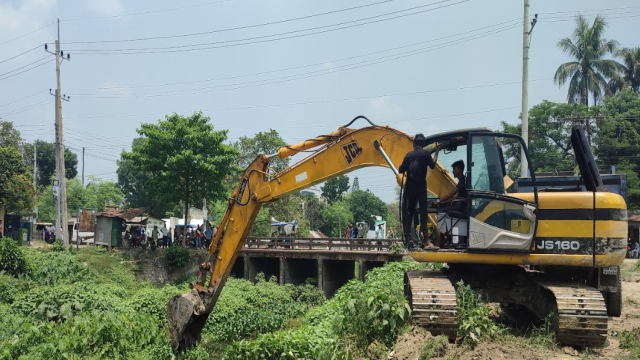Andrea , April 13, (V7N)- In 2015 Andrea Amico returned from vacation to four large yellow envelopes on her kitchen table — one for each family member.
A year before, she had discovered a news article about a drinking well in Portsmouth, New Hampshire, that had been closed after it was found to contain high levels of per- and polyfluoroalkyl substances — known as PFAS. The well was located right beside her husband’s office and children’s daycare.
The tests revealed what Amico had feared. The family had elevated levels of the chemicals in their blood and her young daughter was most exposed. “It was devastating,” said Amico.
What are PFAS and why are they concerning?
The Portsmouth well contained PFOS, a toxic chemical found in a type of firefighting foam. The levels were 12 times above the US Environmental Protection Agency’s recommended guidelines at the time and 600 times above current standards.
The chemical was traced to a former air force base near the city which had used the foam for training purposes. It had leached into the soil and contaminated groundwater.
PFOS is part of a family of around 15,000 synthetic chemicals called PFAS. They are known as ‘forever chemicals’ because they don’t naturally break down and can take thousands of years to degrade.
With a unique ability to resist heat, water and dirt, they’re widely used in a huge range of consumer and industrial products. These chemicals are found in everything from waterproof outdoor clothes, makeup, and stain-resistant carpets to medical devices, semiconductors and wind turbines.
PFAS spread easily through water and air, polluting the environment. The chemicals, mainly ingested through drinking water and food, build up in the body over time. They’ve been detected in human blood, hair and breast milk.
So far, only a handful of forever chemicals have been studied and only a fraction are regulated in the European Union and US. Research has linked different PFAS to problems including elevated cholesterol, thyroid disease, hormonal disruption, decreased fertility, and some cancers.
The fight for answers in Portsmouth and beyond
Amico, an occupational therapist, first heard of PFAS in the newspaper article about the polluted well in Portsmouth. But she has since spent more than a decade pushing for answers.
The blood test results left her angry and frightened — and she wasn’t alone. Her family were among almost 2,000 people, including children, in the area who received blood tests between 2015-2017. A US health department report foundlevels of certain PFAS were about 2 to 3 times higher than in the general population.
The report left Amico with unanswered questions on health impacts and prevention. So, in 2017 she helped set up the National PFAS Contamination Coalition, a group advocating for better regulations and for polluting companies to be held accountable. In 2018, she testified before the US Senate in the first ever PFAS hearing.
She has also fought for a health impact study, which she says was conducted in her community in 2019 as part of a larger project documenting other contaminated areas in the US. The results are expected this year.
The PFAS problem extends far beyond Portsmouth to numerous cities, towns and farms across the country. Testing over the last 20 years shows 98%of Americans have detectable levels of PFAS in their blood, and that a significant portion of tap water across the US is contaminated.
What can be done to minimize PFAS’ impact?
Methods for cleaning up PFAS in the environment exist but are often complex and expensive.
At the former air force base in Portsmouth, in addition to setting up new groundwater treatment plants, they eventually installed special filters to trap PFAS at the contaminated well. But filtration, the main method for removing PFAS from water, has its downsides.
“Most of the time the PFAS that is collected on filters just gets moved to a landfill somewhere and we’ve just moved it someplace without really destroying it,” said Dan Jones, a professor in the department of biochemistry and molecular biology at Michigan State University.
Incineration is another option, but that requires specialized facilities and uses a lot of energy, said Jones.
Other technologies — such as using sound waves or microbes to destroy PFAS in water — are still in development. It is not clear how far they are scalable or if they can deal with more than just a few types of PFAS.
Cleanup is only one part of the puzzle, said Alissa Cordner, an environmental sociologist at Whitman College in the US state of Washington.
“If we want to reduce risk from PFAS, we need to turn off the tap of new and existing uses of PFAS in almost all cases,” said Cordner.
One significant step is a potential EU ban of more than 10,000 PFAS, added Cordner. A decision on the proposal is expected by the bloc’s chemical agency soon. But countries such as France have already taken steps to ban the use of the chemicals in products such as cosmetics, clothing and shoes as well as mandating the monitoring of PFAS in drinking water.
In the US, the Environmental Protection Agency has withdrawn Biden-era plans to put a national limit on the amount of PFAS manufacturers can discharge into water. This means it’s up to states to regulate. Still, the new EPA head, Lee Zeldin, has said that addressing PFAS is a “top priority” for him.
As things stand, manufacturers have to submit notices to the EPA for any new PFAS chemicals so they can be assessed for risk potential. But chemicals banned or phased out under the policy are often replaced by other, similarly harmful ones, said Dan Jones.
Fear for the future
Back in Portsmouth, Amico has installed a filter on her kitchen tap. She would support a wider PFAS ban but says individuals can also play a role in changing what they buy.
“I certainly understand people love to have waterproof coats and waterproof boots and stain-resistant carpets,” she said. “But I also think as consumers we have to ask ourselves is it worth it?”
Ten years on from receiving those yellow envelopes her children are doing well, said Amico. But she lives with a dread of future health issues. “It’s like the fear of what might be coming.”






























Comment: